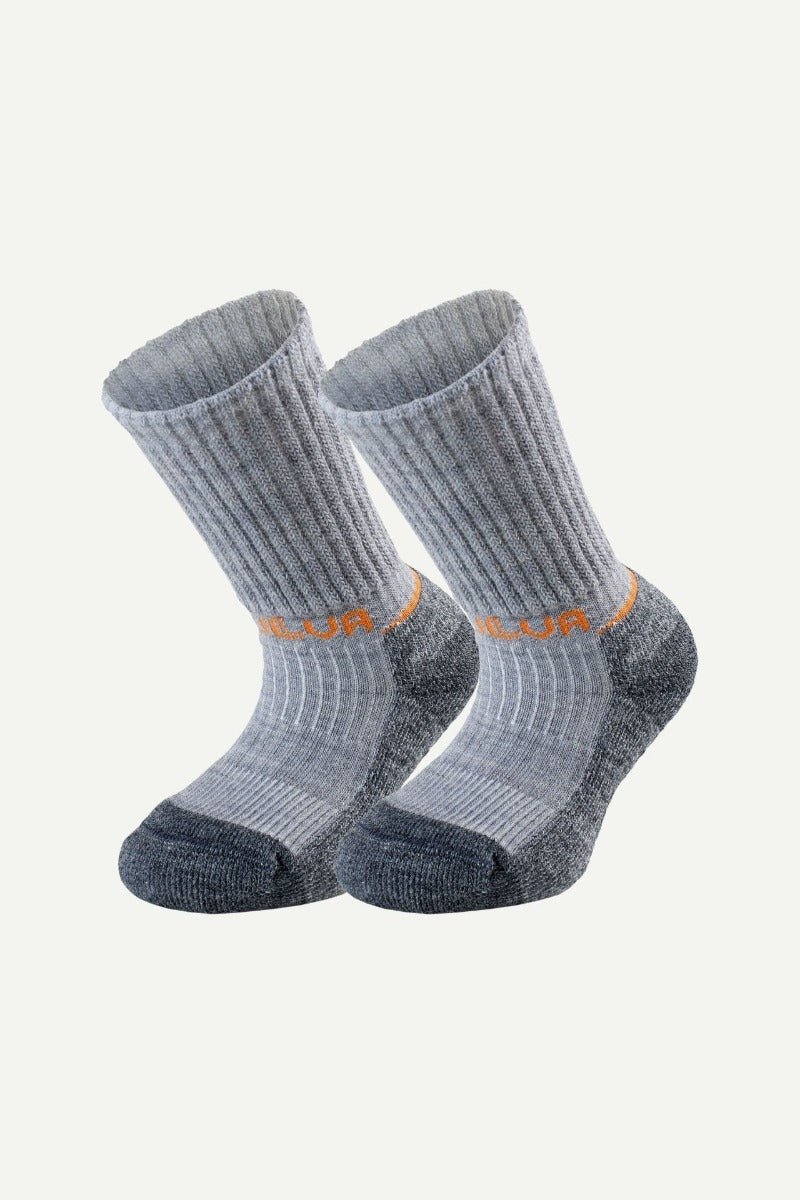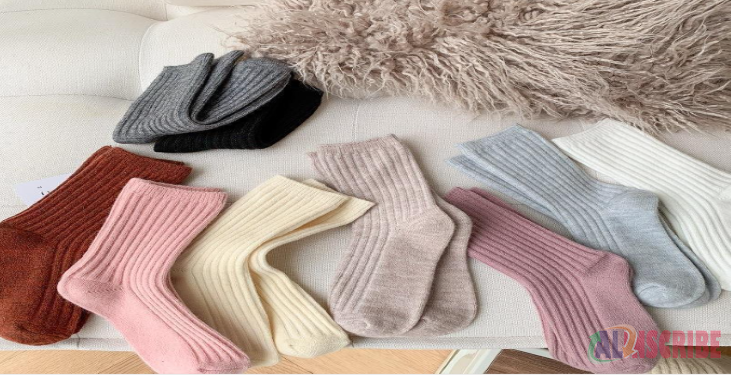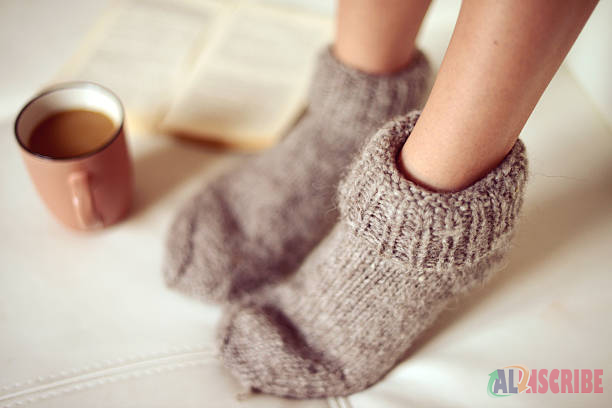Woolen Socks For Children: Keeping Little Feet Cozy And Stylish

Introduction
When it comes to ensuring the well-being of our children, keeping them warm during chilly seasons is a top priority for parents. In this pursuit, one often-overlooked yet crucial item of clothing is woolen socks. In this article, we will explore the myriad benefits of choosing woolen socks for children, from their unmatched insulation properties to their eco-friendly nature.
Benefits of Woolen Socks
Insulation and Warmth
Wool has been a trusted material for centuries due to its exceptional insulation capabilities. When it comes to socks for children, this means keeping those tiny feet warm and comfortable, even in the coldest weather.
Breathability
Contrary to common misconceptions, wool is a highly breathable material. Woolen socks allow air circulation, preventing the discomfort caused by sweaty and stuffy feet, a common issue with synthetic fabrics.
Moisture-Wicking Properties
Wool has a natural ability to wick moisture away from the skin, keeping children's feet dry. This is particularly advantageous during physical activities, preventing discomfort and potential health issues.
Choosing the Right Size and Material
Sizing Guide
Ensuring the right size is crucial for the effectiveness of woolen socks. A comprehensive sizing guide can aid parents in finding the perfect fit, and avoiding issues like socks that are too tight or slip off.
Types of Wool and Their Advantages
Understanding the different types of wool, such as merino and lambswool, allows parents to make informed choices based on specific needs. Merino, for example, is known for its softness and versatility.

Durability and Longevity
Investment in Quality
While woolen socks may come with a slightly higher price tag, their durability makes them a worthwhile investment. Quality socks can withstand the rough and tumble of children's activities.
How to Extend the Lifespan
Simple care practices, such as proper washing and storage, can significantly extend the lifespan of woolen socks. Teaching children to care for their belongings instills responsibility from a young age.
Fashionable and Fun Designs
Encouraging Kids to Wear Woolen Socks
Make the process of getting dressed exciting for children by choosing socks with trendy patterns and vibrant colors. Allowing them to express their style through their socks can make the daily routine enjoyable.
Trendy Patterns and Colors
Modern woolen socks come in a variety of designs, from cute animals to bold geometric patterns. Finding socks that resonate with a child's interests adds an element of fun to their wardrobe.
Health Considerations
Hypoallergenic Nature
Parents with concerns about allergies can rest easy with woolen socks, known for their hypoallergenic properties. Wool is unlikely to cause skin irritation, making it suitable for even the most sensitive skin.
Prevention of Foot Odor and Infections
Wool's natural ability to resist odors and inhibit bacterial growth ensures that children's feet stay fresh and healthy. This is particularly beneficial during extended periods of wear.
Tips for Caring and Washing
Proper Washing Techniques
To maintain the integrity of woolen socks, it's essential to follow specific washing guidelines. This includes using a gentle detergent and avoiding excessive heat.
Storage Tips for Woolen Socks
Proper storage is key to preventing damage to woolen socks. Encourage children to keep their socks in a designated drawer, away from potential snagging or stretching.
Eco-Friendly Choice
Sustainable Production
Wool is a renewable resource, and the production process has a lower environmental impact compared to synthetic materials. Opting for woolen socks aligns with eco-conscious parenting.
Reducing Environmental Impact
Choosing products that are biodegradable and produced with minimal environmental impact contributes to a healthier planet. Woolen socks can be a small yet meaningful step toward sustainable living.
Cost-Effective Option
Analyzing Long-Term Savings
While the initial cost of woolen socks may be higher, the long-term savings become evident when considering their durability. Fewer replacements mean less money spent over time.
Budget-Friendly Alternatives
For budget-conscious parents, there are affordable yet quality options available. Exploring different brands and sales can help strike a balance between cost and quality.

Testimonials and Real-Life Experiences
Parents' Experiences with Woolen Socks
Real-life stories from parents who have embraced woolen socks for their children can offer valuable insights. These testimonials provide a glimpse into the practical benefits experienced by families.
Positive Impact on Children's Comfort
Many parents report positive changes in their children's comfort levels after switching to woolen socks. From outdoor play to cozy nights at home, the difference is noticeable.
Comparisons with Other Materials
Wool vs. Cotton and Synthetic Fabrics
Highlighting the advantages of wool over other materials clarifies why it stands out as the superior choice for children's socks. Cotton may be common, but wool offers unmatched benefits.
Advantages of Wool for Children
Softness, breathability, and insulation make wool an ideal material for children's sensitive skin and active lifestyles. Understanding these advantages helps parents make informed decisions.
Creative DIY Woolen Sock Projects
Customizing Socks for Kids
Engaging children in creative activities, such as decorating their own woolen socks, adds a personal touch. This not only enhances the bond between parents and children but also makes the socks unique.
Involving Children in the Process
Taking children shopping for their socks or involving them in online selections fosters a sense of autonomy. When children have a say in their wardrobe choices, they are more likely to embrace the items.
Addressing Common Concerns
Itching and Allergies
Clearing up misconceptions about wool causing itching or allergies is essential. Educating parents on the different types of wool and their suitability for sensitive skin can alleviate concerns.
Overcoming Preconceived Notions
Some parents may have preconceived notions about wool being scratchy or high-maintenance. Addressing these concerns with facts and practical tips can change perspectives.
Where to Purchase Quality Woolen Socks
Reputable Brands and Stores
Guiding parents to reputable brands and stores ensure they invest in quality products. Recommendations based on customer reviews and experiences can be valuable in decision-making.
Online Shopping Tips
For busy parents, online shopping is a convenient option. Offering tips on selecting the right size, reading product descriptions, and checking return policies enhances the online shopping experience.
Conclusion
In conclusion, opting for woolen socks for children is a decision that goes beyond fashion. The numerous benefits, from insulation to sustainability, make them a practical and thoughtful choice for parents. By understanding the diverse advantages and addressing common concerns, parents can confidently embrace woolen socks as an integral part of their children's wardrobe.
Article Comments
Articles Search
Sponsor
There are zero sub-categories in this parent category.
There are zero sub-categories in this parent category.
There are zero sub-categories in this parent category.
















